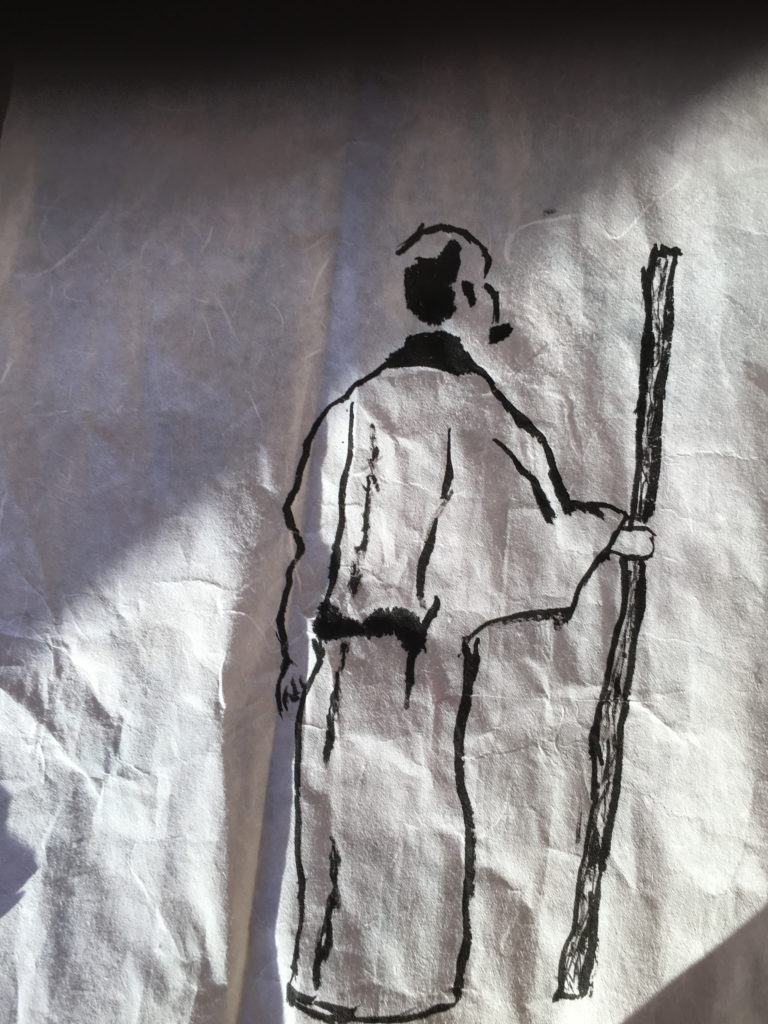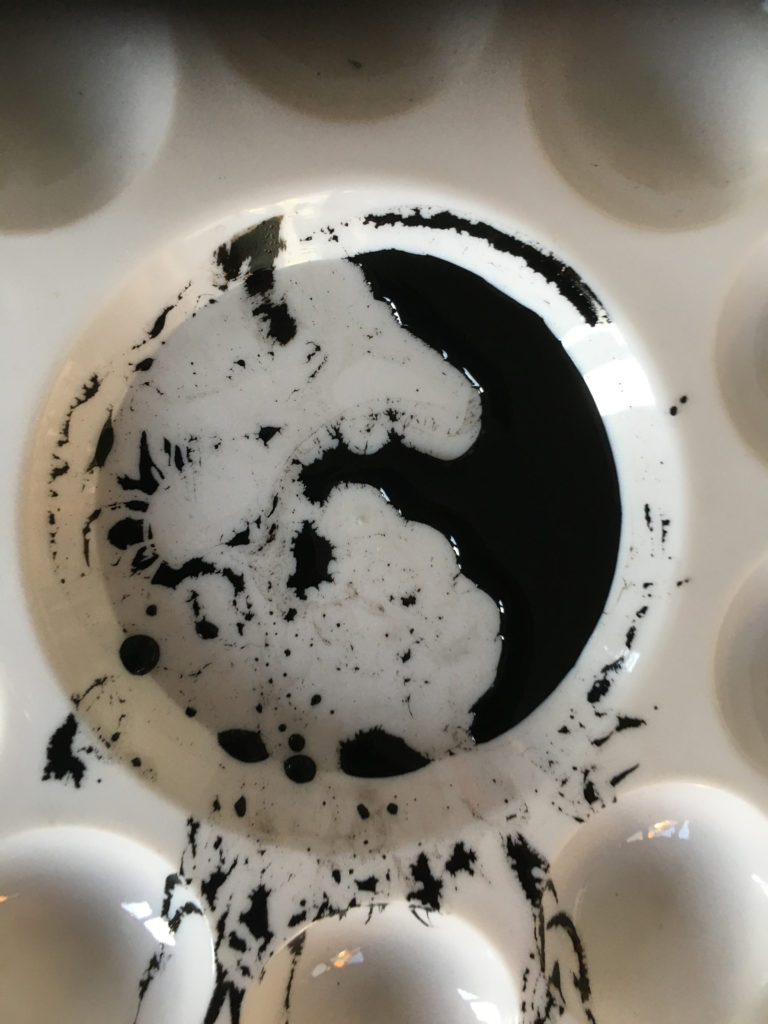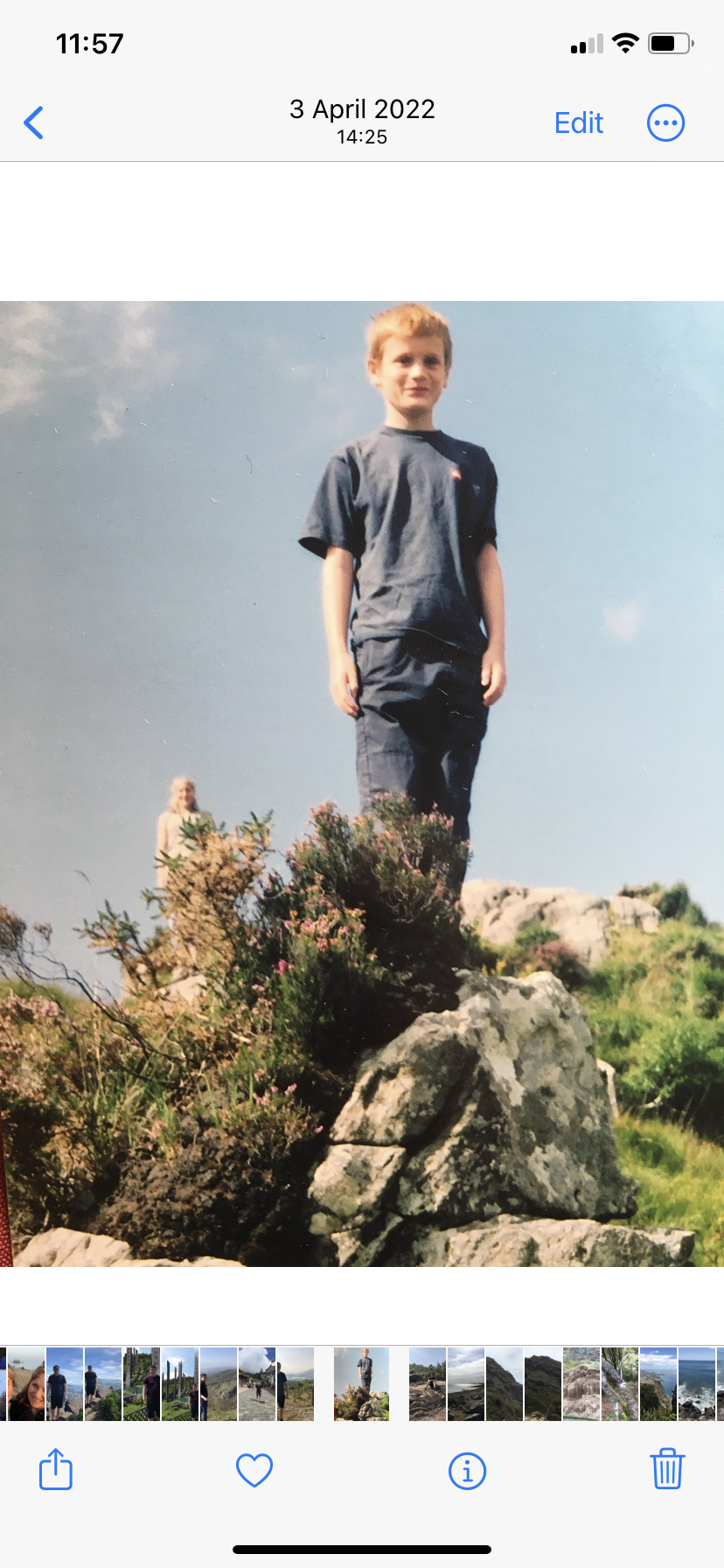I have long been interested in Taoism. I was initially introduced to it by dear school friend David. I have been carrying out some renewed reading of key texts over the last couple of weeks because it has been selected within the next topic of my bi-monthly philosophy group. This blog is not intended even to attempt to summarise any of its principles, in so far as it has them indeed as the Tao or ‘Way’ is as much about denial of concrete principles – perhaps the most familiar sense introduced to us in the West are the play of opposites ‘yin’ and ‘yang’ in all things, including ourselves, and the virtue of inaction over action. Of ‘going with the flow’, not just at a superficial level but in a deep but simple, non-cerebral, even mystical way, assisted by our observations of nature as well as meditation and a true understanding of ‘self’ and ‘non self’. The very use of ‘ism’ after ‘Tao’ probably doesn’t help!
Followers of my art will now my interest in Chinese painting. Here is a link direct to my gallery of work attempting a Chinese style, or incorporating elements: https://antartist.co.uk/galleries/chinese-style/
As part of my renewing acquaintance again with Tao (that’s good too! – one key concept is ‘fu’, or returning!), I have been rereading Thomas Merton’s ‘The Way of Chuang Tzu’. Taoism is often best understood by stories or poems. Even these have been translated differently. Merton was a Trappist monk and his book was the result of five years of ‘reading, study, annotation and meditation’ but he humbly admits to his own ‘personal and spiritual interpretation’ as a consequence. The extract that follows is called ‘The Man of Tao’. In the Chinese ink drawing below I have used the fewest lines of flow to represent this man. I have also used an old sheet of ‘rice paper’ I have in my studio for the substrate and deliberately allowed all its folds and creases to show. I have photographed the work in light and shade for atmosphere. The man holds a stick which can also represent the concept of ‘pu’ or ‘uncarved wood’ – the simplest purest, natural state before we impose our ambitions and purposes upon it, as we do upon ourselves and others.
I think in our complex stress times where everything seems ‘out of proportion’ a sense of the Tao is needed more than ever.
At the bottom I have also photographed my ink palette used for this work as it seems to have its own ‘yin’ and ‘yang’ style. At the same time, ‘looked at another way’, a face emerges……
After note: on Word Spellcheck, the only words it didn’t like were ‘fu’ and ‘pu’! It wanted to change ‘pu’ to ‘up’! Which reminds me also of another key aspect of Taoism: playful humour.
The Man of Tao
The man in whom Tao
Acts without impediment
Harms no other being
By his actions
Yet he does not know himself
To be ‘kind’, to be ‘gentle’.
The man in whom Tao
Acts without impediment
Does not bother with his own interests
And does not despise
Others who do.
He does not struggle to make money
And does not make a virtue out of poverty.
He goes his way
Without relying on others
And does not pride himself
On walking alone.
While he does not follow the crowd
He won’t complain of those who do.
Rank and reward
Make no appeal to him;
Disgrace and shame
Do not deter him.
He is not always looking
For right and wrong
Always deciding ‘Yes’ or ‘No’
The ancients said, therefore:
“The man of Tao
Remains unknown
Perfect virtue
Produces nothing
‘No-Self’
Is ‘True-Self’
And the greatest man
Is Nobody”
[XV11.3]


November 2022






Very interesting . My wife and I start each day with a 20 minute meditation and then read a days meditation from 365 Tao by Deng Ming-Tao . It has become fundamental to our life and although we have been through it many times it continues to reveal fresh wisdom.